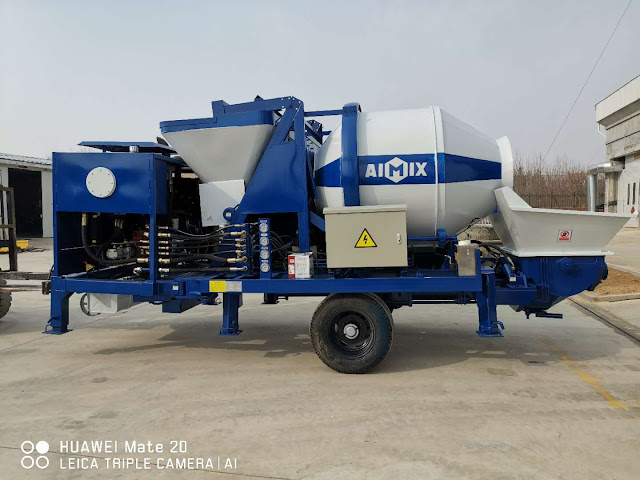How Can Construction Sites in Latin America Achieve Self-Sufficiency in Concrete?
In Latin America, construction projects often face delays due to inconsistent concrete supply, remote site access, or logistical bottlenecks. As infrastructure development accelerates in countries like Brazil, Colombia, and Peru, contractors are actively seeking ways to become more independent and efficient—particularly in how they source and produce concrete. One key approach to solving this challenge is achieving on-site self-sufficiency in concrete production.
This article explores how construction sites across Latin America can take control of their concrete supply, reduce reliance on external batching plants, and improve project timelines—while highlighting the growing importance of the self-loading concrete mixer(hormigonera autocargante) in enabling this transformation.
The Importance of Concrete Self-Sufficiency in Remote and Fast-Paced Projects
Concrete is the foundation of nearly every construction project, from residential buildings to highways and public infrastructure. However, relying solely on third-party suppliers can introduce a range of issues:
-
Delays caused by long delivery distances
-
Higher costs due to transportation and waiting times
-
Quality degradation from long haul times
-
Scheduling conflicts with concrete plants
In countries where road infrastructure is still developing or where job sites are located far from urban centers, these challenges can quickly escalate. That’s why self-sufficiency has become a goal for many Latin American contractors looking to stay competitive.
On-Site Concrete Production With Self-Loading Mixers
What Is a Self-Loading Concrete Mixer?
A self-loading concrete mixer(autohormigonera Perú) is a mobile unit that allows a single operator to load raw materials, mix concrete, and transport it directly to where it's needed—all from the same machine. It's a powerful solution for contractors seeking more control over their concrete production, especially in hard-to-reach or fast-paced environments.
These machines come equipped with automatic weighing systems, water tanks, rotating drums, and articulated steering, making them a full-fledged mobile concrete plant.
How Self-Loading Mixers Enable Self-Sufficiency
With a self-loading mixer, construction crews can:
-
Produce concrete on-demand, eliminating the need for large storage or advance scheduling
-
Reduce reliance on third-party suppliers, especially in remote or rural regions
-
Control mix quality directly, thanks to onboard measurement and automated mixing systems
-
Minimize labor requirements, since one machine replaces multiple pieces of equipment
In regions like the mountainous areas of Chile or the Amazonian zones of Ecuador, where transporting ready-mix concrete can be a logistical nightmare, these machines provide unmatched independence.
Applications Across Different Construction Scenarios
Rural and Infrastructure Projects
Self-sufficiency is particularly important in rural infrastructure development. For road repairs, school construction, or bridge work in remote regions, bringing concrete from a central plant is inefficient and costly.
A self-loading mixer allows these projects to stay on track, producing exactly the amount of concrete needed without wastage or delays.
Urban Infill and Small-Scale Residential Projects
Even in cities, small to medium-sized contractors benefit from on-site concrete production. Waiting for partial loads from large batching plants can delay smaller jobs, such as house construction or commercial renovations.
Self-loading concrete mixers offer a compact, efficient alternative that gives crews flexibility and faster turnaround on tight urban sites.
Emergency and Disaster Response
In post-disaster scenarios—after floods, landslides, or earthquakes—speed and mobility are critical. Having the ability to mix and pour concrete on the spot can dramatically accelerate rebuilding efforts. Self-loading mixers(Autohormiguera Colombia) are already being used by municipal governments and NGOs in parts of Latin America for rapid-response construction.
Key Considerations for Achieving Concrete Autonomy
To successfully implement on-site concrete production, contractors should consider:
-
Training: Operators should be trained in using self-loading mixers efficiently and safely. Fortunately, most models are intuitive and require minimal learning time.
-
Maintenance: Routine checks and preventative maintenance ensure long-term reliability in remote areas.
-
Material Storage: Having reliable access to cement, aggregates, and water on-site is essential for continuous mixing.
-
Capacity Planning: Choosing the right mixer size—ranging from 1.2 to 6.5 cubic meters—depends on the project scale and daily volume needs.
Conclusion
Achieving self-sufficiency in concrete is no longer just an option for construction companies in Latin America—it’s becoming a necessity. By adopting versatile equipment like the self-loading concrete mixer, contractors can overcome supply chain delays, reduce costs, and improve the speed and quality of their work.
Whether operating in the jungles of Peru, the plains of Argentina, or the hills of Guatemala, construction teams can unlock new levels of productivity and flexibility with the right tools. A self-loading mixer represents more than a piece of equipment—it’s a step toward complete concrete independence on the job site.




Comments
Post a Comment